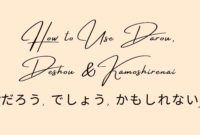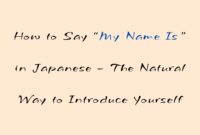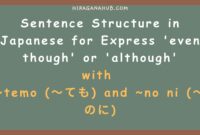Final Particles Ka, Yo, Ne, Yone (か、よ、ね、よね)
In Japanese, final particles such as か (か),
よ (よ), ね (ね), and the combined
よね (よね) are commonly used in daily conversations. These
final particles, also called しゅうじょし (終助詞), serve to
add specific meanings to sentences. In this article, we will explore the
function and usage of each of these particles with a variety of examples.
Let’s get started!

Function of the Particle か (か)
The particle か (か) is used to form questions. To turn a
sentence into a question in Japanese, you simply add
か (か) at the end of the sentence without needing to change
the subject or verb, unlike in English. Here are a few examples with
か (か):
-
ジョンさんはアメリカじんですか?
Jon-san wa Amerika-jin desu ka?
Is John American? -
えいががすきですか?
Eiga ga suki desu ka?
Do you like movies? -
あなたはにほんじんですか、それともカナダじんですか?
Anata wa nihonjin desu ka, soretomo Kanada-jin desu ka?
Are you Japanese or Canadian? -
きょうはやすみですか?
Kyou wa yasumi desu ka?
Is today a holiday?
The particle か (か) is easy to use when forming questions.
Function of the Particle よ (よ)
よ (よ) is used to inform the listener about new information
or to emphasize a statement. This particle is similar to the word “loh” or
“kan” in Indonesian. Here are some examples using よ (よ):
-
きのう、マリアさんとあいましたよ。
Kinou, Maria-san to aimashita yo.
I met Maria yesterday, you know. -
こんや、パーティーがありますよ。
Konya, paatii ga arimasu yo.
There’s a party tonight, you know. -
わたしはあなたのみかただよ。
Watashi wa anata no mikata da yo.
I’m on your side, you know. -
もうすぐでんしゃがくるよ。
Mou sugu densha ga kuru yo.
The train is coming soon, you know.
With よ (よ), we emphasize that the information is new or
important to the listener.
Function of the Particle ね (ね)
ね (ね) is used to ask for confirmation or agreement from the
listener, similar to “right?” or “isn’t it?” in English. Here are some
examples using ね (ね):
-
このえいがはおもしろいですね。
Kono eiga wa omoshiroi desu ne.
This movie is interesting, isn’t it? -
あのみせのケーキはおいしいですね。
Ano mise no keeki wa oishii desu ne.
The cakes at that shop are delicious, aren’t they? -
このほんはすこしむずかしいですね。
Kono hon wa sukoshi muzukashii desu ne.
This book is a bit difficult, isn’t it? -
おばあちゃんのりょうりはおいしいですね。
Obaachan no ryouri wa oishii desu ne.
Masakan buatan nenek enak kan?
With ね (ね), we wait for the listener’s confirmation or
agreement on what we said.
Function of the Combined Particle よね (よね)
When よ (よ) and ね (ね) are combined as
よね (よね), the meaning becomes a mix of emphasizing
information while also seeking confirmation from the listener. Here are some
examples using よね (よね):
-
わたしたちはなかよしよね。
Watashitachi wa nakayoshi yo ne.
We are close friends, aren’t we? -
きょうはとてもあついよね。
Kyou wa totemo atsui yo ne.
It’s really hot today, isn’t it? -
このもんだいはかんたんよね。
Kono mondai wa kantan yo ne.
This problem is easy, right? -
あなたのていあんはすばらしいよね。
Anata no teian wa subarashii yo ne.
Your suggestion is amazing, right?
With よね (よね), we emphasize the information and confirm
with the listener.
Example Sentences:
-
ジョンさんはアメリカじんですか?
Jon-san wa Amerika-jin desu ka?
Is John American? -
きのう、マリアさんとあいましたよ。
Kinou, Maria-san to aimashita yo.
I met Maria yesterday, you know. -
お母さんが作ったうどんはおいしいですね。
Okaasan ga tsukutta udon wa oishii desu ne.
The udon made by mom is delicious, isn’t it?
Vocabulary:
| Kanji | Hiragana | Romaji | Meaning |
|---|---|---|---|
| 映画 | えいが | eiga | movie |
| 休み | やすみ | yasumi | holiday |
| 味方 | みかた | mikata | side/support |
| 電車 | でんしゃ | densha | train |
| 天気 | てんき | tenki | weather |
| 面白い | おもしろい | omoshiroi | interesting |
| おいしい | おいしい | oishii | delicious |
| 本 | ほん | hon | book |
| 店 | みせ | mise | shop |
| 提案 | ていあん | teian | suggestion |
| 仲良し | なかよし | nakayoshi | close friend |
I hope this explanation of か (か), よ (よ),
ね (ね), and よね (よね) makes these
particles clearer and easier to use in your Japanese conversations. If
something is unclear, feel free to drop a question! See you in the next post!


